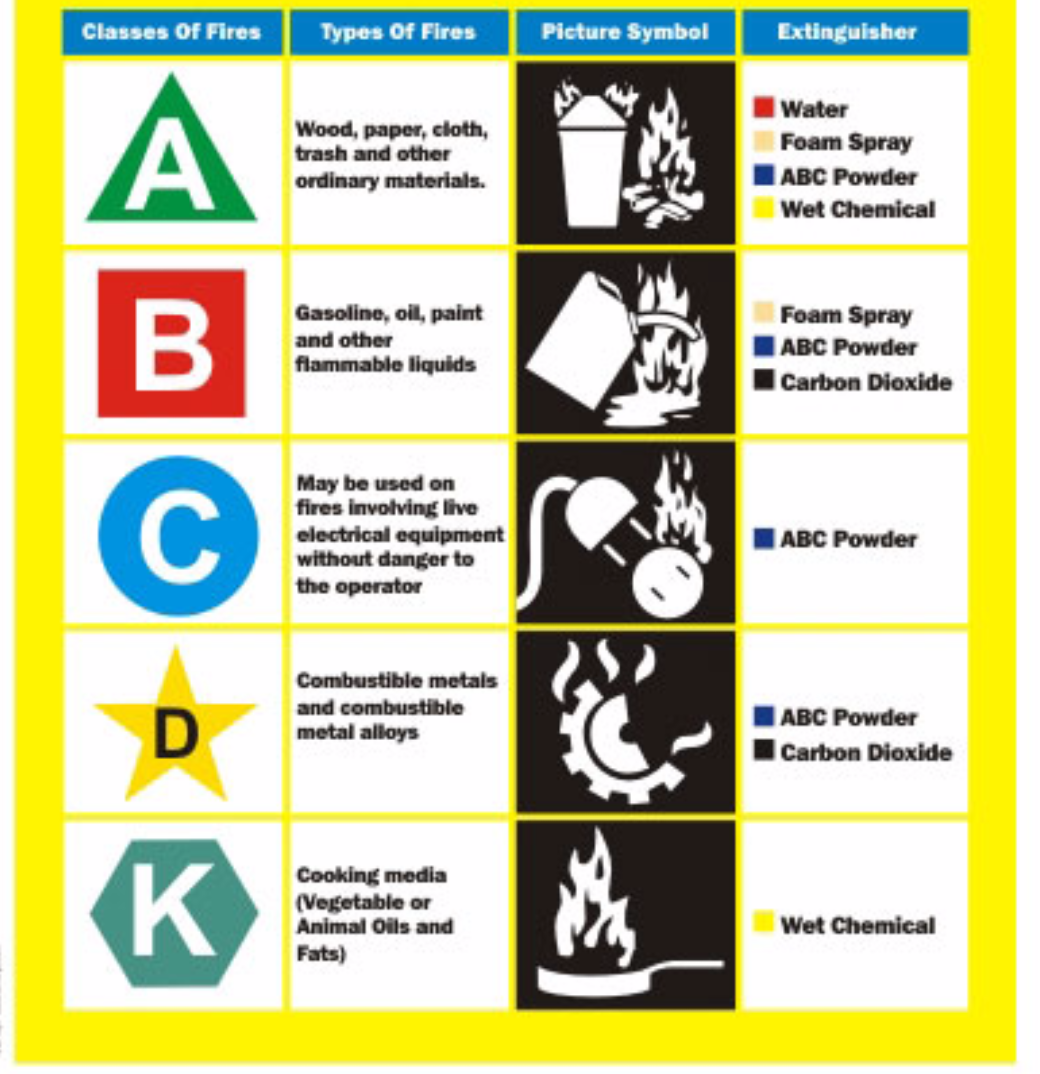Do You Have the Right Fire Extinguisher for Your Workplace?
PORTABLE FIRE EXTINGUISHER BASICS
It’s Fire Prevention Week, a great opportunity to educate your employees about best practices in the workplace and at home that can save their lives. If prevention measures fall short and a fire breaks out, quick action is required. Ensure people are safe and activate 911. Then, if your Emergency Action Plan calls for the use of portable fire extinguishers, knowing what fire extinguisher to use and how to use it properly is essential.
The wrong extinguisher can endanger lives. Hazards like spreading combustible dust or chemicals, splashes of burning oil, electrical shocks, and even explosions can occur when the wrong extinguisher is used even with the best of intentions.
Using the right extinguisher for the burning material is critical. That means being familiar with the symbols on portable extinguishers before the need arises. Training should include LOOKING at the symbols on portable fire extinguishers before using one to be sure the match is right.
Portable extinguishers are identified by the Fire Class they address. The Class is determined by the material inside the extinguisher. The material may be liquid or powder and is under pressure (thus the risk of splashing/spreading the flames). The Class is represented by a pictogram of the burning material intended to extinguish.
Here is a primer of common portable extinguishers:
Class A - Ash (Air-Pressurized Water) extinguishers
- Right for ordinary combustible materials such as paper, wood, cardboard, and most plastics. The number on the rating label indicates the amount of water it holds and the amount of fire it can extinguish.
- Never use water on grease/oil fires – splash and spread risk is high!
Class B - Barrel (Dry Chemical) extinguishers
- Right for flammable or combustible liquids such as gasoline, kerosene, grease and oil. The number on the rating label indicates the approximate number of square feet of fire it can extinguish.
Class C - Current (Dry Chemical) extinguishers
- Right for electrical equipment fires, such as appliances, wiring, circuit breakers and outlets.
- Never use water on electrical fires - the risk of electrical shock is high!
Class K - Kitchen (Wet or Dry Chemicals for High Heat) extinguishers
- Right for cooking oils, trans-fats, or fats in cooking appliances and kitchens.
- Never use water on grease/oil fires – splash and spread risk!
Class D - Dynamite (Specialized Dry Chemical) extinguishers
- Right for specific chemical laboratory settings for fires that involve combustible metals, such as magnesium, titanium, potassium and sodium. For class D fires only.
The right extinguisher may put out a fire and save injury and property. But this can only happen when proper monthly inspections and yearly maintenance of extinguishers takes place and effective training is given to all affected employees.
Effective fire safety is easier with great resources; check out the following online tools:
- Training to the work environment specific to the worker. MEMIC provides a lending library with free access to fire safety videos.
- Ensure your Fire Prevention Plan and Emergency Action Plans up to date with this OSHA e-Tool.
- OSHA Fire Service Features of Buildings and Fire Protection Systems.
- National Fire Protection Association Resources.



